News Literacy
Published by Rowman & Littlefield
A wholly owned subsidiary of The Rowman & Littlefield Publishing Group, Inc.
4501 Forbes Boulevard, Suite 200, Lanham, Maryland 20706
www.rowman.com
Unit A, Whitacre Mews, 2634 Stannary Street, London SE11 4AB
Copyright 2017 by Robert W. Janke and Bruce S. Cooper
All rights reserved. No part of this book may be reproduced in any form or by any electronic or mechanical means, including information storage and retrieval systems, without written permission from the publisher, except by a reviewer who may quote passages in a review.
British Library Cataloguing in Publication Information Available
Library of Congress Cataloging-in-Publication Data Is Available
ISBN 978-1-4758-3929-6 (cloth: alk. paper)
ISBN 978-1-4758-3930-2 (pbk: alk. paper)
ISBN 978-1-4758-3931-9 (electronic)
 The paper used in this publication meets the minimum requirements of American National Standard for Information SciencesPermanence of Paper for Printed Library Materials, ANSI/NISO Z39.481992.
The paper used in this publication meets the minimum requirements of American National Standard for Information SciencesPermanence of Paper for Printed Library Materials, ANSI/NISO Z39.481992.
Printed in the United States of America
Preface
Fake and inaccurate news is damaging to our society. Civic decisions and activities based upon fake and inaccurate newsfrom TV, radio, newspapers, Internet, and magazinescan have negative consequences for all of us.
Preparing students for more effective civic decisions and engagementthrough better understanding of what they see, hear, and readis an important goal of educators. Recent calls have been made for curricular efforts to develop knowledge and skills in critical thinking, media literacy, and data literacy. This knowledge and set of skills are necessary for students to easily identify and distinguish real, precise news, from false and inaccurate information.
In addition, students must also have the disposition to apply this knowledge and set of skills as part of the responsibility as an engaged citizen. These knowledge, skills, and dispositions are a developmental process that should be learned and started early in school and life.
Fake news is created and disseminated in a multitude of ways. A description of each of those ways or techniques is beyond the scope of this or perhaps any book. However, many of the most common techniques are presented as a necessary introduction of how to distinguish real and fake news.
Fake news can create lies with numbers, as well as words. Methods to identify fake numbers and data, as well as fake words and statements, are also described.
The Checklist Manifesto (Gawande, 2009) supports the advantages of checklists to provide a reminder and protection, so we do not forget to examine all information. Ever looked in the pilots cabin of an airplane before takeoff? Do we feel better knowing the pilots have to follow a checklist to verify the examination of all information?
Checklists may effectively be used with students as young as older elementary students (DOrio, 2017). Therefore, checklists are included to assist educators and parents in preparing all students, as future informed citizens, to better evaluate the newsand teachers to fight and correct fake news and information.
More than 100 indicators and techniques to look for in identifying fake news are included in this book with minimal use of technical language. The result is this book provides a greater number and variety of ways to objectively distinguish real and fake news than the limited range suggested by some media to just check the sources.
The authors are nonpartisan. Unbiased real-life examples are included to engage and increase the understanding of the student and citizen across a spectrum of real-life issues. To keep the book at a reasonable length, real-world examples are provided for many, but not all, of these indicators and techniques.
PART I of this book provides an introduction and necessary background information about fake news and information. Examples of the problems and potential harm from fake or inaccurate news are presented. Additional background information is included about the four hurdles or reasons for the proliferation of fake or inaccurate news. These reasons include:
- Distrust and doubt regarding what is accurate information in the media;
- Limited personal knowledge and skills to objectively evaluate and distinguish between real and fake news;
- Personal biases that may distort evaluation of the news;
- Lack of personal commitment or disposition to apply objective standards in evaluating the news.
PARTS II and III include chapters that present checklists of indicators and issues to evaluate the news. Each of the chapters in these parts is organized in this manner:
- (1)Chapter number and title;
- (2)Checklists and description of indicators of the news to look for that contribute to accuracy of the news;
- (3)Checklists and description, with selected examples, of indicators of the news to look for that contribute to fake news,
- (4)Description of why the issue is important for determining real from fake news and two discussion questions that educators could use to begin engagement of students in distinguishing real and fake news.
PART II examines the sources and the terms used in the news. A variety of terms, labels, and slogans are presented that a student may encounter in everyday living.
PART III describes methods used to collect, analyze, and interpret information in the news. Only basic mathematical skills are needed and technical language is minimized.
PART IV includes techniques used to spread fake news. Some common misconceptions or fake news in educational practice are described.
PART V provides suggestions for protecting us from fake news. Instructional activities including a sample lesson plan, project-based activity, and a basic fake news bingo game are included. The final chapter provides recommendations for individuals, educational policies, and societal policies to minimize the influence of fake news.
This book can be used as a beginning resource guide for educators to prepare middle school through undergraduate students. Classes in these subjects may be most appropriate: civics; journalism; political sciences; social studies; and social science.
A citizen may use the look for indicators as practical survival guides to personally, but objectively, evaluate the news and win the war against fake news. A goal of this book is that we all become news literate in distinguishing real and fake news.
Acknowledgments
Robert Janke acknowledges Dr. Bruce S. Coopers exemplary enthusiasm and guidance. Stephen Coyne gave great technical support in the preparation of documents. My wife, Kathy, provided encouragement during the long hours in preparation of this book.
This book is dedicated to my sons Robert, Ryan, Kevin, Daniel; my daughter-in-law, Emily; my granddaughters Anna, Juliet, and Nora. My wish is that your lives are free from error in finding what is precious and true.
Part I
BACKGROUND AND HURDLES FOR EVALUATING THE NEWS
It is only the ignorant who despise education.
Publilius Syrus
Fake news has long been part of human history. The danger of fake news, however, is more concerning because our current society has more rapid and diverse ways of disseminating fake news than we have ever experienced.
The first chapter identifies some of the concerns of fake news. Examples are provided of how fake news has created significant and potentially lethal consequences.

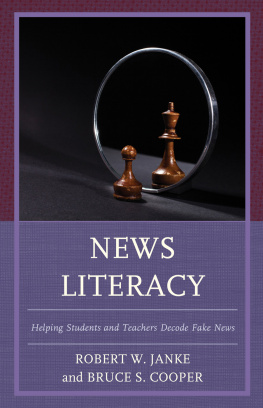
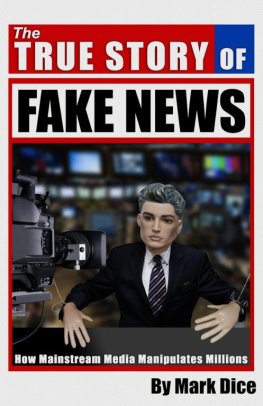
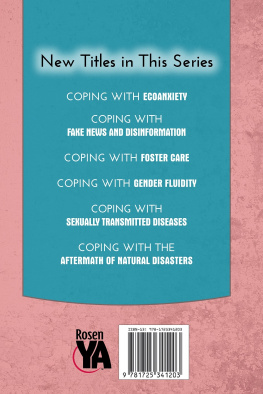
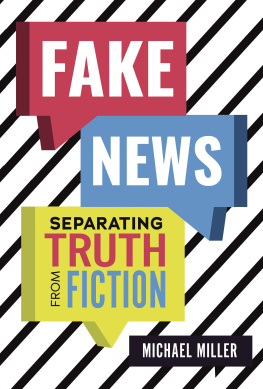
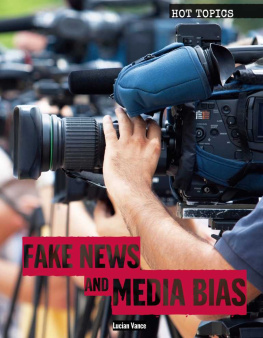
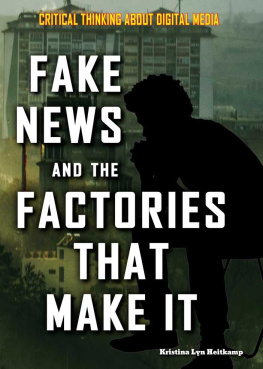

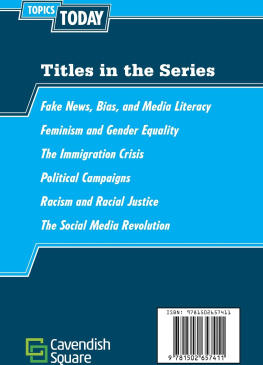
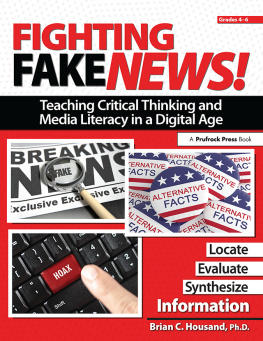
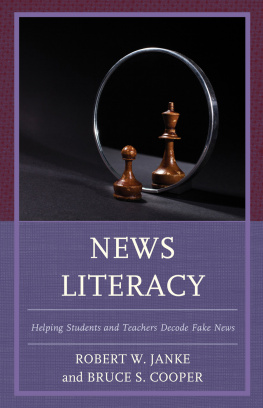
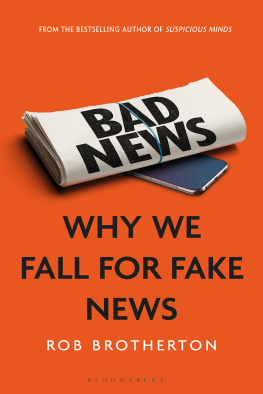
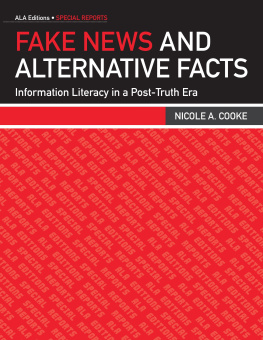
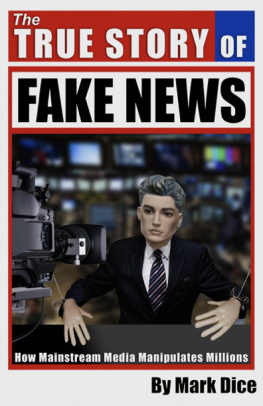

 The paper used in this publication meets the minimum requirements of American National Standard for Information SciencesPermanence of Paper for Printed Library Materials, ANSI/NISO Z39.481992.
The paper used in this publication meets the minimum requirements of American National Standard for Information SciencesPermanence of Paper for Printed Library Materials, ANSI/NISO Z39.481992.